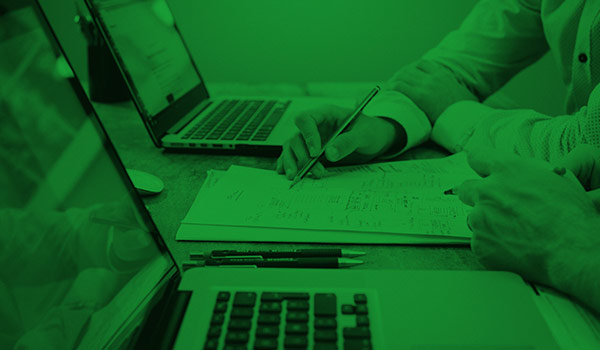How to deal with legacy systems and where to put the data
The situation is all too familiar: IT systems grow and thrive, and users become hunters and gatherers of data. Sooner or later, you inevitably must...
4 min read
Editorial Team : Mar 3, '25

In recent years, few topics have been discussed as intensely in the SAP industry press as the end of maintenance for SAP ERP 6. The industry press is full of explanations, tips, tricks, and discussions about migration paths. But who is affected by which date, and why? To find out, Philipp von der Brüggen spoke with Arne Schmidthals, Business Development Chief Expert at SAP.
I know the industry press is fixated on 2027! However, three key years play a role here: besides 2027, there are also 2025 and 2030. To clarify, for SAP ERP 6 with Enhancement Packages 0-5, mainstream maintenance ends on December 31, 2025. Those still using these versions at that point will automatically transition into "Customer Specific Maintenance," which comes with significantly reduced service. Specifically, this means no HR or legal changes and only limited security updates. As of December 31, 2025, customers using SAP ERP 6 with Enhancement Packages 0-5 will face a significantly increased risk, as their business and legal requirements will no longer be supported.
December 31, 2027, marks the end of mainstream maintenance for SAP ERP 6 with Enhancement Packages 6, 7, and 8. For these versions—and only these versions—extended maintenance is available, which will then expire on December 31, 2030.
That’s correct. SAP ERP 6 customers with Enhancement Packages 0-5 could upgrade to Enhancement Packages 6-8. If that isn’t enough, they can also purchase extended maintenance, buying themselves time until December 31, 2030. However, this typically makes little sense, as these steps also require time, resources, and money that are ultimately invested in what's only a temporary solution. The migration to SAP S/4HANA remains inevitable. Delaying the transition only increases complexity, effort, and cost without any real benefit, and it doesn’t shorten the migration process to SAP S/4HANA. In fact, now that we're already in 2025, some companies will find it extremely difficult to complete their migration projects by December 31, 2025.
The largest group facing a transformation consists of SAP ERP 6 users with Enhancement Packages 6, 7, and 8. We see a clear trend of a shrinking number of customers on the lower Enhancement Packages (0-5), which is how it should be! Some customers are buying time by upgrading, but a large number are following the recommended move toward S/4HANA.
There are many reasons. Some customers operate multiple systems and want to convert some immediately while temporarily parking others. Others aim to consolidate everything first and shut down their old systems later. For example, companies may have a project to introduce a new system with new business processes across different regions, and this will involve many stakeholders. Unfortunately, this is often a two-to-three-year project. These companies first consolidate their systems to the latest version before moving to SAP S/4HANA.
Standard maintenance is called mainstream maintenance, which includes everything one would typically expect: new support packages, legal changes, HR updates, security fixes, bug fixes, and recommendations. When mainstream maintenance ends, the software automatically transitions into customer-specific maintenance. In this phase, customers still have access to all notes, tools, and support packages, but SAP’s ability to fix new software errors is very limited. Importantly, customer-specific maintenance does not include new legal or HR updates and only offers very limited security patches. If new legal requirements arise in HR, for example, it is the customer's responsibility to deal with them. This can lead to auditors being unable to certify the system or requiring significant additional effort to do so.
Finally, there is extended maintenance, available only for specific versions, such as SAP ERP 6 with Enhancement Packages 6-8. Extended maintenance is a paid service for on-premises customers. For customers running these versions in the SAP Cloud, extended maintenance is included in the subscription.
A good starting point is the Product Availability Matrix on the SAP website. It provides an initial overview. However, when it comes to bringing these various data points together into a comprehensive strategy, a trusted migration partner is the best contact for addressing specific questions. The SAP Account Team is also available to assist.
This is easy to answer: clearly towards the cloud, with the two options GROW and RISE. GROW with SAP includes the SAP S/4HANA public cloud product, while RISE with SAP offers the private cloud solution. For customers already using SAP ERP, the private cloud is the usual path. Customers can take this route via a greenfield (new implementation) approach, a system conversion (brownfield), or a selective data transition for more complex migrations. This includes consolidating different systems or performing carve-outs/carve-ins. Customers should work with partners like Natuvion, who are experts in these methodologies and have proven experience.
The public cloud is particularly attractive for new customers who have not used an SAP ERP system before. It is also suitable for those looking for a strong level of standardization and willing to redefine their processes. Customization options are limited in the public cloud, which is a prerequisite for making this transition. The only migration method to the public cloud is the greenfield approach, ensuring full utilization of all available functionalities.
For existing ERP customers who have fine-tuned their systems over many years, there are practical and psychological hurdles. These companies must replace many customizations with standard processes, requiring a shift away from specialized configurations.
SAP recently expanded its ERP Private Cloud offering to include Microsoft SQL alongside SAP S/4HANA. This allows customers to transition from on-premises operations to the private cloud without requiring an immediate upgrade to a higher enhancement package. This isn’t an alternative to SAP S/4HANA, but serves as a first step towards the cloud, which is particularly useful for customers facing hardware investments. Instead of purchasing new hardware, they can transition to the cloud while maintaining flexibility to move to SAP S/4HANA Private Cloud later.
There are many benefits. In the context of maintenance, cloud customers using SAP ERP 6 with Enhancement Packages 6-8 receive extended maintenance until 2030 at no extra cost. However, customers with Enhancement Packages 0-5 will still see mainstream maintenance end in 2025, even in the cloud.
Compatibility Scope includes functionalities that were temporarily carried over from SAP ERP into SAP S/4HANA while successor functionalities were being developed. The rights to use these functionalities expire at the end of 2025. Customers who have already migrated to SAP S/4HANA and still rely on Compatibility Scope must transition to successor functionalities by then.
Initially, nothing changes on the technical level. However, customers will no longer have contractual rights to use them. SAP recommends planning this transition now. Customers migrating now must address Compatibility Scope functionalities as part of their migration process.
Arne, thank you for the conversation! Hopefully, we have brought more clarity to customers concerning SAP ERP's end of maintenance.

The situation is all too familiar: IT systems grow and thrive, and users become hunters and gatherers of data. Sooner or later, you inevitably must...

In recent years, few topics have been discussed as intensely in the SAP industry press as the end of maintenance for SAP ERP 6. The industry press is...

Successful transformations require careful planning, accurate system insights, and a clear strategy. Companies should have a clear vision, choose the...